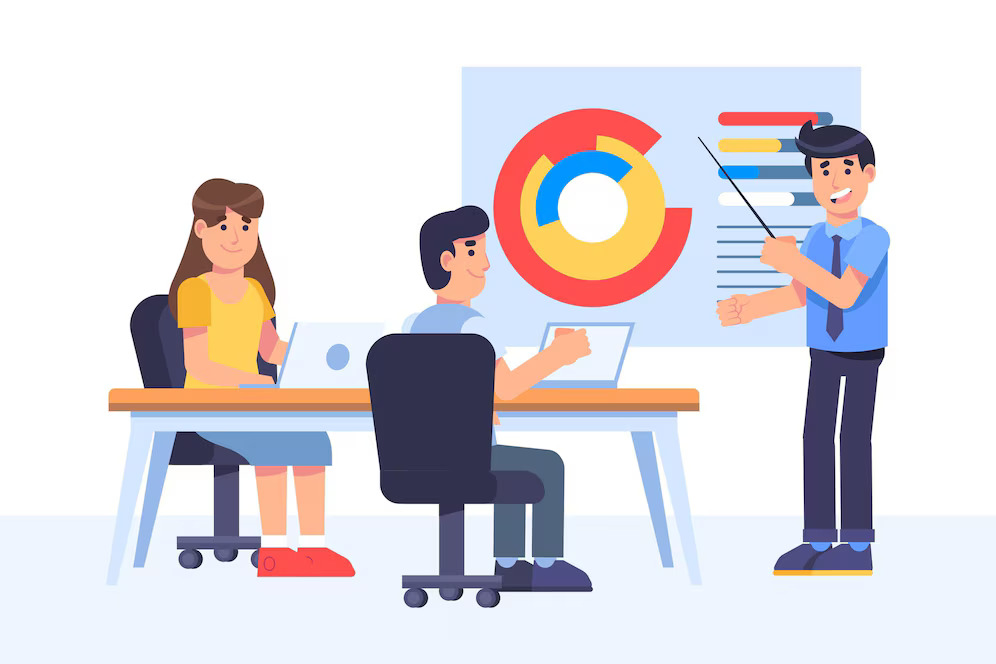
In 2023, 75% of businesses across 21 countries in Europe had a tough time finding workers with the right skills. Compared to 42% in 2018, this was a massive increase. Further, a 2024 study revealed that 17% of workers are overqualified for their job and another 13% are underqualified.
One way to address this issue is by opting for a CPD tracker or an integrated CPD management system.
What Is Traditional Record-Keeping?

In traditional record keeping, HRMs and managers have to track and record employee data through paper files and spreadsheets. When it comes to maintaining a continuing professional development record, both managers and employees have to keep track of the certifications an employee has and when they need to be renewed. Further, it becomes the responsibility of the managers to identify which employees have a skill/ training gap and prompt them to take up an appropriate training session.
In an organisation that has a large number of employees, this becomes a mammoth task. It may also lead to managers losing track of which of their workers are falling short of their training and certifications.
Additionally, traditional record keeping is also subject to the below issues:
- Inconsistencies in record keeping
- Little to no standardisation
- Time-consuming process
- Prone to errors
- Low scalability
- Risk of loss and damage to records
- Difficulty in maintaining compliance
- Lack of standardisation
- Difficulty in auditing records
To mitigate these issues, a CPD system combined with a professional development tracking software can be handy.
What Is A CPD Tracking Software?

Once a person leaves their full-time education and joins the workforce, they have to take up professional development to stay competitive. This process usually involves continuing professional development training and obtaining certificates.
Further, to function properly and keep up with the industry, organisations need to track, record, and manage a huge volume of employee data. A CPD tracker or tracking software is a tool that helps organisations maintain compliance by keeping track of certifications, renewal deadlines, and mandatory training for employees.
Thus, for business, an integrated CPD Management System offers the following:
- A centralised platform for easy tracking and record keeping for all employees.
- Managing compliance and certification for all employees.
- Gaining employee insights, such as participation in skill development and training sessions.
- An ecosystem of continuous professional learning and improvement.
- Better employee engagement and retention.
- Reporting and analytics on skill gaps and training needs among employees.
Thus, a CPD Tracking Software offers ROI in terms of data-driven decision making for resource allocation for training and development.
Key Differences Between Traditional and Digital CPD Tracking

Research shows that 94% of people have an easier time with paper-based learning. This also carries over to the Traditional training management system. However, this also comes with its own set of issues.
While the earlier systems used the traditional paper and spreadsheet route, now there are CPD management software available to streamline the system. The primary differences between them can be examined as below:
1. Features
Traditional training management systems involve finding appropriate training materials, prompting workers to participate, and then maintaining associated records. This can be a demanding and time-taking process.
By opting for a CPD tracker or management software, you get access to a user-friendly interface. This usually comes with detailed course catalogues, assessment tools, and certification management. Thus, you can get an easy-to-use system for your workplace.
2. Ease of Use
Almost every person knows how to file documents away. However, with an increase in the volume of data, it can be difficult to keep track of the data for every employee.
On the other hand, professional development software is usually easy to use. Further, the vendors often offer training to ensure every person in the organisation is adept with the CPD tracker.
3. Accessibility
To update a traditional system, employees would have to submit a copy of their certifications to the HRMs or the managers. This would prompt a visit to the office, which might not be possible for a remote employee.
In contrast, a CPD tracker or CPD management software can be used from anywhere. Thus, employees working in remote and hybrid arrangements can log in from their systems and update their continuing professional development records, training, and certificates. These can also come with an in-built CPD certification service which automatically updates the records.
4. Accuracy
A traditional training management system involves manual input at every stage. This makes it prone to errors, which increases with an increase in the volume of data (the number of employees).
In contrast, a CPD Tracker or Tracking Software offers an automated system, especially when it is combined with a CPD certification service. Thus, it reduces manual intervention and associated errors that can take place.
5. Compliance
Maintaining industry compliance and being audit-ready is essential for every business. With traditional systems, conducting an audit can be a huge task.
By opting for an Integrated CPD management system, you get a digital system that can be tracked at any time and is audit-ready. This, in turn, makes it easier to maintain compliance.
Why Is a Digital CPD Tracker the Better Choice?

According to LinkedIn’s Workplace Learning Report 2025, 83% of workplaces plan to increase their career-driven learning programs. This is a step forward to boost employee engagement. Here, a CPD tracker can prove useful.
When a business chooses a CPD tracking software to streamline its employee management system, it stands to gain the following:
1. Professional Body Requirements
By opting for continuing professional development training, workers can improve their existing knowledge and skills, and learn new skills. Certain professional bodies require training certifications. These are a part of industry compliance that a CPD tracker can help maintain.
2. Learning Style
Most CPD systems and certification services allow people to take up their continuing professional development training at their own pace. Thus, people can easily receive new certifications even during their work hours. Further, these systems can also be tailored to the learning styles of the workers.
3. Organization Size
Since the integrated CPD management system comes in the form of a software, they are completely scalable. Thus, as your business grows in size, it can accommodate all new employees.
4. Cost
Though a CPD tracking software can seem like a pocket pinch, it more than makes up for it in terms of benefits. This involves savings in the form of time reduced for paperwork and fewer errors in record keeping.
5. Data Security
CPD trackers come with fairly strict data security protocols that meet industry standards. Thus, when your employee data is saved on a CPD management system, it is safe from loss due to misplaced paper files as well as cyber threats.
In Conclusion
By allowing employees to take up continuing professional development training at their own pace, CPD trackers are an excellent way to streamline learning and development programs. Thus, businesses should evaluate and adapt CPD tracking software for their employee training programs.


